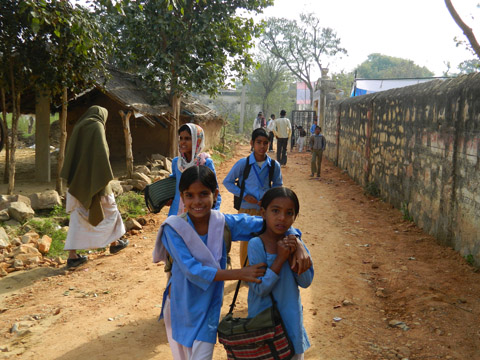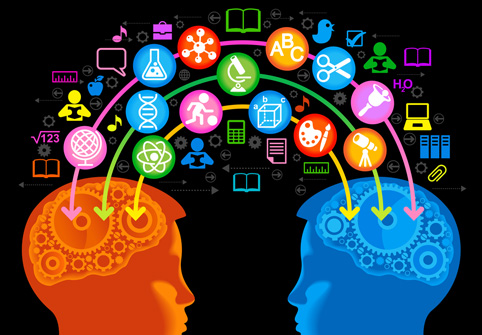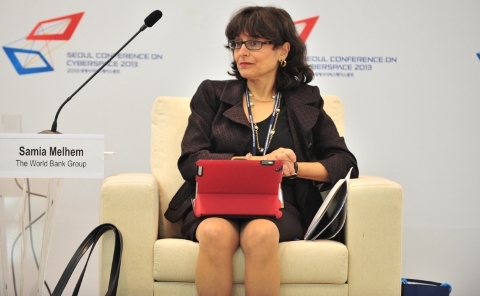
ICTpost Education Bureau
How to define e-Learning: The convergence of the Internet and Learning, or Internet-enabled learning?; The use of network technologies to create, foster, deliver and facilitate learning, anytime and anywhere; The delivery of individualised, comprehensive, dynamic learning content in real time, aiding the development of communities of knowledge, linking learners and practitioners with experts.
e-Learning, if designed and delivered correctly is and does all of these things but in many cases the emphasis is put on the e and not the learning inherently e-Learning is about Learning. This will require many paradigm shifts in many different quarters. All these requirements fall into two categories: support and financial issues and pedagogical and methodological issues. The latter issues include the creation of different learning environments, pedagogical changes and the creation and adoption of relevant learning and teaching materials. The challenge is also to adopt strategies such that as many learners as possible have access to such environments, pedagogies and materials.
Consider two of the above requirements to ascertain what the challenge really is.
Adoption of an appropriate pedagogy
Appropriate learning materials
Pedagogy
Schools and colleges, while looking at the introduction of such courses, must also look at different delivery methods. There will be a variety of audiences and with present and future technology education will obviously not be confined to the physical classroom. The audiences will consist of students within the education system but will also consist of those on the periphery of the system and indeed those outside the system. It will consist of those who want to retrain, those who want to change career, those who want to up-skill, those who want a qualification for their present skills plus many more. It is unlikely that traditional didactic teaching methods, nor even perhaps full time education, will be entirely suitable for everyone and more progressive approaches and different timetabling arrangements will be required. Digital Distance Learning will be a major factor in any solution. Recent experiences in e-Learning suggest that a blended approach is most suitable. The role of the teacher is no less important, in fact it is probably more important now. In the areas of multimedia and games, teachers will be required more and more to adopt the role of facilitator rather than the role of knowledge expert. They must encourage innovation and creativity.
The new technologies will provide a variety of online learning approaches not previously available. These will include online face-to-face situations between teacher and student, live e-Learning-self paced online learning, live demonstrations online, master classes, collaboration online, synchronous and asynchronous tutoring, discussion groups and the development of communities of practice as well as simple knowledge acquisition. All of these methods require changes in teacher, student and classroom organisation. The management of these changes is another major challenge to Indian education.
The pedagogy supported by Synergy Learning operates in an e-Learning environment underpinned by social constructivist learning theory which blends face-to-face methods, tutor-led demonstrations, student research, learning tasks, online learning materials, offline learning materials, collaborative and cooperative assignments, teaching on demand, self paced learning, student centred approaches in varying degrees depending on what has to be learnt. This pedagogy allows for a variety of different learners in a variety of different situations.
Learning materials
It is widely recognised that learners do not all learn in the same way and they do not even learn the same things in the same way. Individual learners have a variety of learning approaches and use these approaches in varying degrees in different learning situations, e.g. visual, auditory or kinesthetic. A good learning environment must also allow for the construction of knowledge, the constructivist approach and, more specifically, social constructivism. Any learning materials that are produced for the e-Learning environment must reflect these differences and this underpinning theoretical perspective. Consequently good learning materials must be in several formats and foster and encourage collaboration and co-operation. Learners must be able to choose their own personal approach and have the opportunity to engage in discourse with others and collaborate and cooperate in the learning environment just as they would in the normal classroom.
When developing the e-Learning materials for the multimedia/games courses Synergy went through three phases.
Analysis of what had to be learnt- In these courses learning includes: mastery of tools, skills acquisition, conceptual understanding, meta models such as critical thinking, research methods and meta cognition.
Consideration of the different learning approaches such as drill and practice, constructivism (mental models and scaffolding) social constructivism (social activities, communities of practice and common knowledge).
Development of different types of materials which consisted of :
Temporal models (movies and demonstrations)
Spatial models (graphics, 2D models, 3D models)
Process models (interactivity, mimicry)
These models include pictures, graphics, diagrams, text, learner interaction, step-by-step activities, demonstrations, simulations, sound/speech and learning as well as assessment tasks. The materials were created as a series of small Learning Objects which can be used and reused in a variety of ways.
Issues and challenges
The issue and challenges for teachers and the Indian education system would appear to be how best to fill the skills gap, adopting a long-term approach. The solution must in itself make use the new technologies of multimedia and games. Indian education must consider introducing courses and curricula in the relevant fields that are engaging, accredited and have an international value, develop new pedagogies that are suitable for and make optimum use of the new technologies and use innovative and creative learning resources produced by the new technologies.







